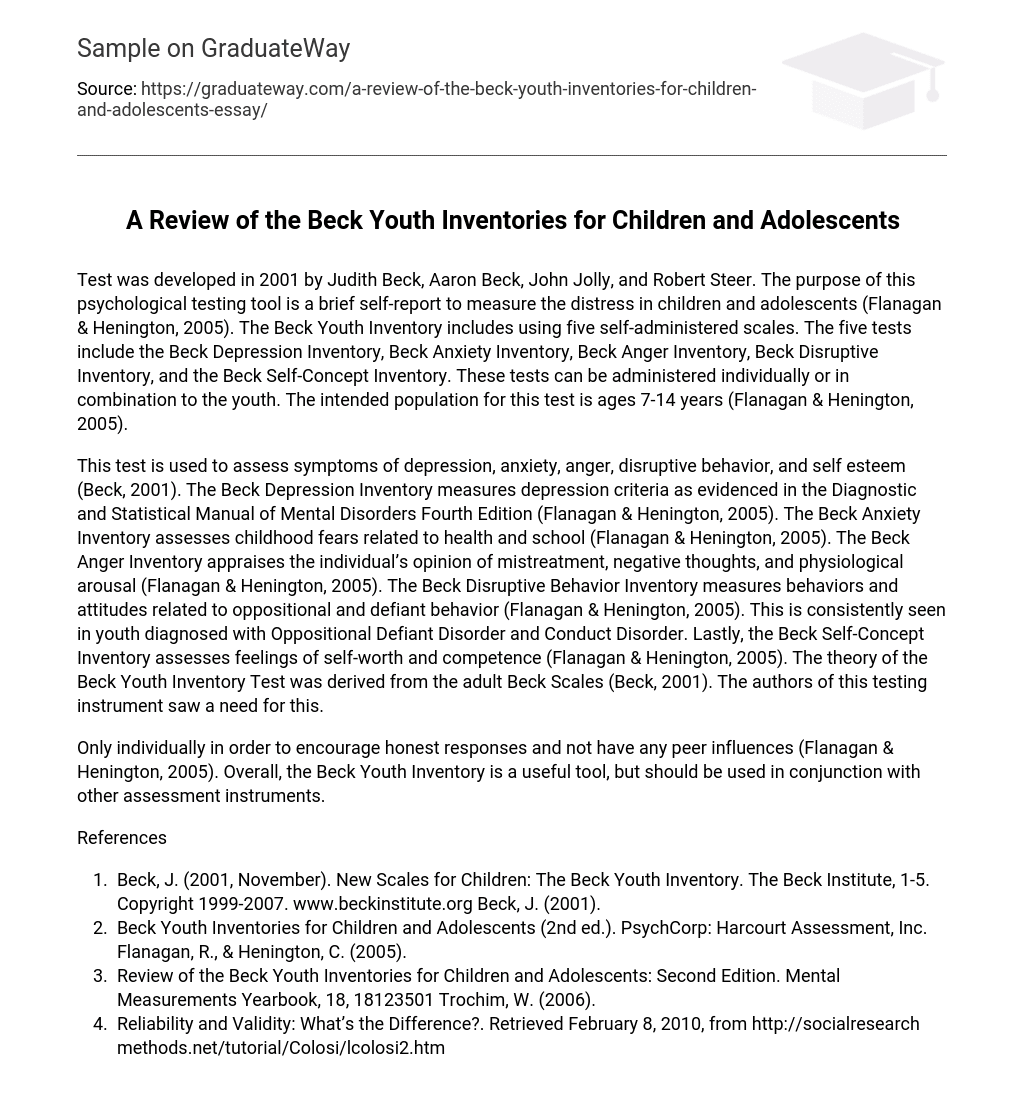Developed in 2001, the Test is a psychological testing tool created by Judith Beck, Aaron Beck, John Jolly, and Robert Steer. Its main purpose is to measure distress in children and adolescents (Flanagan & Henington, 2005). The Test consists of five self-administered scales collectively called the Beck Youth Inventory: the Beck Depression Inventory, Beck Anxiety Inventory, Beck Anger Inventory, Beck Disruptive Inventory, and the Beck Self-Concept Inventory. These scales can be used individually or combined to assess individuals between the ages of 7 and 14 years old (Flanagan & Henington, 2005).
The Beck Youth Inventory Test evaluates various symptoms, including depression, anxiety, anger, disruptive behavior, and self-esteem (Beck, 2001). It consists of several inventories that assess different aspects. The Beck Depression Inventory measures depression criteria based on the Diagnostic and Statistical Manual of Mental Disorders Fourth Edition (Flanagan & Henington, 2005), while the Beck Anxiety Inventory focuses on childhood fears related to health and school. The Beck Anger Inventory assesses perception of mistreatment, negative thoughts, and physiological arousal. Additionally, the Beck Disruptive Behavior Inventory measures behaviors and attitudes associated with oppositional and defiant behavior commonly observed in young individuals diagnosed with Oppositional Defiant Disorder and Conduct Disorder. Lastly, the Beck Self-Concept Inventory evaluates feelings of self-worth and competence (Flanagan & Henington, 2005). The development of the Beck Youth Inventory Test was based on the adult Beck Scales (Beck, 2001) due to a recognized need for this assessment.
Only individually in order to encourage honest responses and not have any peer influences (Flanagan & Henington, 2005). Overall, the Beck Youth Inventory is a useful tool, but should be used in conjunction with other assessment instruments.
References
- Beck, J. (2001, November). New Scales for Children: The Beck Youth Inventory. The Beck Institute, 1-5. Copyright 1999-2007. www.beckinstitute.org Beck, J. (2001).
- Beck Youth Inventories for Children and Adolescents (2nd ed.). PsychCorp: Harcourt Assessment, Inc. Flanagan, R., & Henington, C. (2005).
- Review of the Beck Youth Inventories for Children and Adolescents: Second Edition. Mental Measurements Yearbook, 18, 18123501 Trochim, W. (2006).
- Reliability and Validity: What’s the Difference?. Retrieved February 8, 2010, from http://socialresearch methods.net/tutorial/Colosi/lcolosi2.htm





